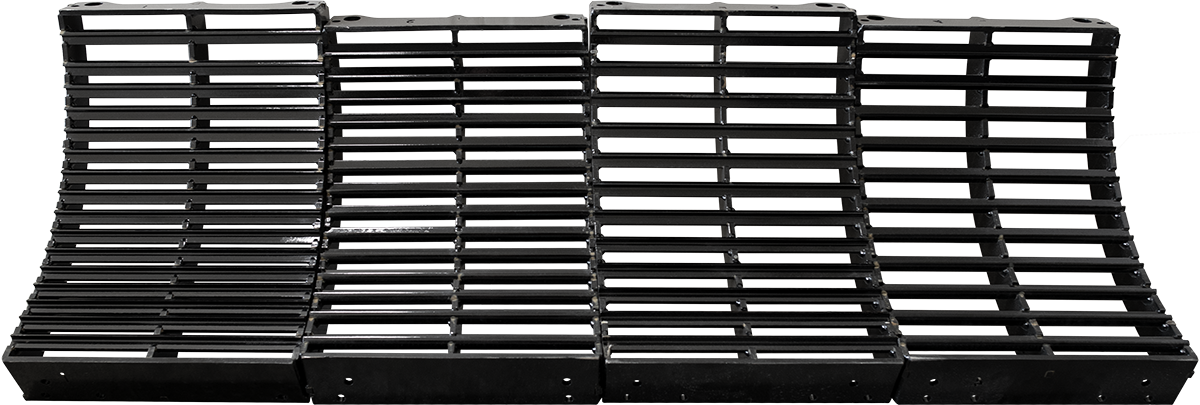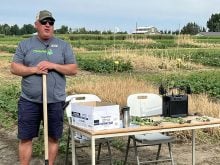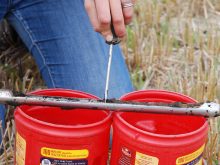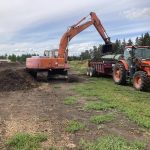After a few years of distasteful prices, bean growers finally have a reason to lick their chops.
A big drop in American bean acreage combined with a poor crop in Ontario and an outright disaster in Michigan have ratcheted prices up.
“Guys have been getting some huge returns,” said Bob Lafond, general manager of Roy Legumex Inc., a pulse processor and marketer based in St. Jean-Baptiste, Man.
Requests for Canadian beans this fall have been plentiful and the orders don’t seem to be abating.
Read Also

AI expected to make itself felt in food systems
Artificial intelligence is already transforming the food we eat, how farmers produce it and how it reaches the consumer, experts say
“The demand will be such that (growers) will be able to move all their beans at a reasonably good price,” said Lafond.
Agriculture Canada forecast a 25 percent price increase over last year on all classes and grades of beans in its Oct. 11 special crops outlook.
That was before the United States Department of Agriculture released its crop report, which projected a 27 percent decrease in production from the 2000 bean crop.
The drop in U.S. production is due in part to an 18 percent decline in bean acreage in that country, but it was exacerbated by a massive crop failure in Michigan – the second largest bean growing state. Growers there faced a drought in the first part of the year, heavy rains later in the summer and a killing frost in October.
“They virtually don’t have much of a crop,” said Dan Penner, president of the Manitoba Pulse Growers Association.
The USDA estimates the Michigan crop will come in at less than one-third of last year’s 187,069-tonne bean crop. That’s bad news for them but good news for Canadian growers.
“If you get a crop, it’s a pretty good year to be a bean grower,” said Penner.
“Even some of the guys that have a poorer crop – at least some of the expenses will be paid this year because the prices are a bit better.”
The term “a bit better” is an understatement.
Lafond said bids for navy beans are up about 75 percent over the same time last year and growers are getting double what they were for blacks a year ago. The story is much the same for pinto prices, which have risen 30 percent, and for other coloured beans.
“We were at the right place at the right time this year,” said Lafond.
But not every Canadian bean grower is reaping rewards. Prices for some classes of beans, such as great northerns, are relatively flat.
There were also production problems in Canada. Growers in Ontario and Quebec had poor crops because of drought, while pockets of Manitoba had difficulties with too much rain. But in general, Manitoba and Alberta harvested slightly above average bean crops.
Manitoba producers seeded half of the 371,700-acre Canadian bean crop this year. Ontario is the second largest producer, but acreage in that province dropped 18 percent to 71,000 acres this spring. Alberta came in third with 55,000 irrigated acres.
Federal analysts are projecting a Canadian crop of 270,000 tonnes, which is almost identical to last year’s production. But because buyers turned to canola to make up for smaller U.S. production, carry-out stocks will be next to nothing.
However, the good times could be fleeting, said Blair Roth, manager of beans and special crops with Agricore.
“Nothing cures high prices like high prices.”
He thinks the good times will attract more bean acreage into production next year. Penner and Lafond concur.
“There’s so few of those good paying crops out there that when they do show up, everybody tries to jump in and benefit from it, but it doesn’t last long,” said Lafond.
Roth said producers can expect reasonably good prices throughout much of next year. Whether those prices taper off depends on what happens south of the border.
Attractive loan deficiency payments for soybeans pulled a lot of U.S. bean acreage out of production this year. If that happens again in 2002, the gravy train might last a little longer.

















